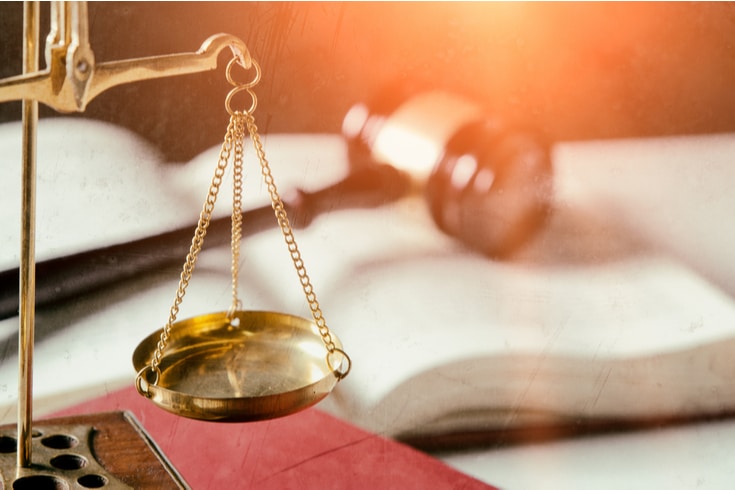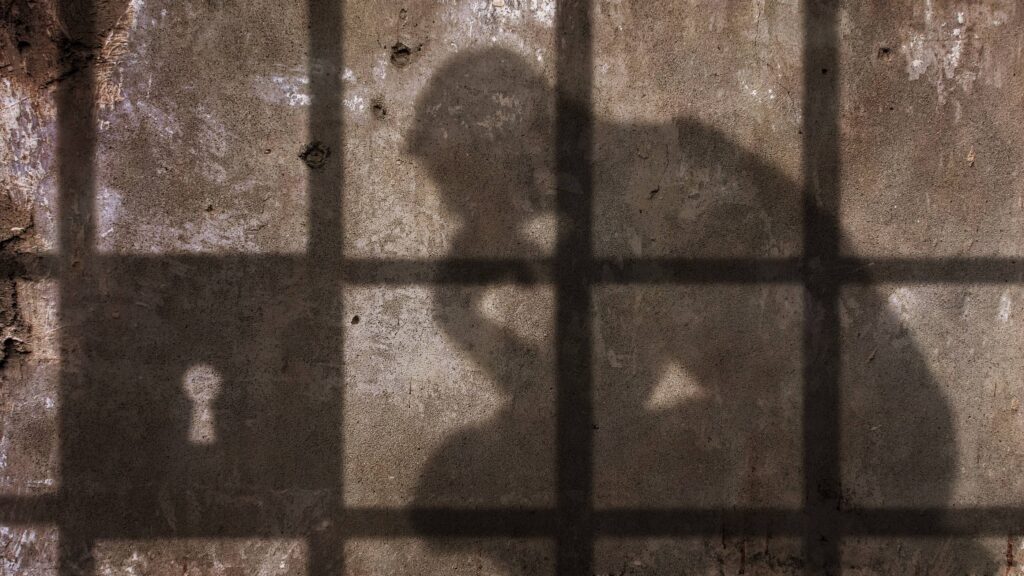Removal of Defamatory Articles: What is the Simpler 'Provisional Measures' Alternative to Litigation?

Discovering an online article that defames you can be distressing. Your natural instinct may be to want it removed immediately. However, consulting with a lawyer, initiating a lawsuit, and waiting for a verdict can be a lengthy process. Of course, during this time, the offending article continues to be published, potentially causing ongoing economic and psychological harm.
In such cases, a procedure known as ‘provisional disposition’ can be helpful. A provisional disposition is a process that goes through the courts, but it is quicker than a full lawsuit.
In this article, we will explain the overview and process of provisional disposition procedures for the removal of defamatory articles, and the criteria for approval, using actual court cases as examples.
What is a Provisional Disposition?
A provisional disposition is a procedure that allows you to secure a situation similar to winning a lawsuit before the formal trial.
In the case of provisional dispositions for defamation measures, it is a procedure that says, “Let’s decide slowly in the main lawsuit whether the article is illegal or not, but if the article continues to be posted while the lawsuit is being conducted, the damage will expand, so for now, let’s assume the article is illegal.” If a provisional disposition is granted, the article is considered “temporarily illegal” and will be removed.
Theoretically, a main lawsuit should be conducted afterwards, and if you lose the main lawsuit and it is determined that “the article was not illegal,” or if you do not file a lawsuit, you cannot complain even if the article is revived and posted. However, articles that are judged to be “illegal” in a provisional disposition are likely to be judged as “illegal” in a lawsuit as well, so in most cases, the party who received the order operates on the premise that “the article is deleted when it becomes illegal in the provisional disposition, and it will not be revived even if a lawsuit is not filed afterwards.” Therefore, there is no particular need to use a lawsuit, and it should be sufficient to use the provisional disposition procedure stipulated in the Japanese Civil Preservation Law as a “quickly concluded lawsuit.”
Requirements for Provisional Disposition of Deletion
In order for a provisional disposition of deletion to be granted, it is necessary to clarify two requirements from Article 13 of the Japanese Civil Preservation Law:
- The right to be preserved
- The necessity of preservation
These two requirements must be clearly demonstrated.
Requirement 1: The Right to be Preserved
The “right to be preserved” refers to the rights that should be protected through measures such as the issuance of provisional disposition orders. In the case of deleting defamatory articles on the internet, rights such as “right to honor”, “right to privacy”, “business rights”, “copyright”, and “trademark rights” are recognized.
Therefore, to demand the deletion of a defamatory article, it is not enough to simply claim, “I am being inconvenienced by this article.” Instead, you must argue, “This article is infringing on my right to ○○.” You must consider under what conditions it can be said that “that right has been infringed,” and build your argument in relation to the content of the article in question. This is a specialty area for lawyers with extensive experience in defamation countermeasures.
For example, in determining whether a provisional disposition for the deletion of an article on the grounds of defamation is possible, it is not enough to merely demonstrate that the article defames someone else’s honor. The demonstration must also be illegal. The writing of an article that defames someone else’s honor is not illegal if the act:
- Relates to a fact concerning public interest
- Is solely for the purpose of public benefit
- The demonstrated fact is true
When seeking the deletion of an article, you must argue that these reasons for illegality do not exist and explain why the post is illegal.
Requirement 2: The Necessity of Preservation
The necessity of preservation refers to the reason why the issue should be resolved by provisional disposition procedures rather than by a lawsuit.
Provisional disposition is a faster procedure compared to a lawsuit. From the opponent’s perspective, there is a possibility that they may have to unnecessarily delete an article due to the speed of the procedure, even though they might have won if they had contested it in court. Therefore, the necessity of preservation means that there must be a reason to promptly delete the defamatory article by provisional disposition, even if such a possibility exists.
However, when a defamatory article is published on the internet, the victim may suffer social disadvantages and ongoing mental damage due to the continued exposure of their private information. Also, because the information published is easily spread on such media, the presence of a defamatory article on such media often constitutes a case of high urgency from the victim’s perspective. Therefore, in relation to the deletion of defamatory articles on the internet, the necessity of preservation is usually not a problem.
Process of Provisional Disposition for Deletion

We will explain the process of provisional disposition for deletion.
Application for Provisional Disposition
When seeking the removal of defamatory articles through provisional disposition procedures, you first apply to the court for a “provisional disposition order for article deletion” (Japanese Civil Preservation Law, Article 23, Paragraph 2).
The victim submits a petition clarifying the content of the rights to be preserved, the facts of the rights infringement, and the necessity for preservation. However, it is stipulated that “the rights or rights relationship to be preserved and the necessity for preservation must be clarified” (Japanese Civil Preservation Law, Article 13, Paragraph 2).
Both trials and provisional dispositions require evidence to support the claims. However, in the case of provisional dispositions, it is sufficient to “clarify” rather than “prove” as in a trial. While “proof” is to convince the judge that it is true without reasonable doubt, “clarification” is sufficient due to the need for speed, allowing the judge to infer that it is “somewhat certain”.
Examination
When you apply for a provisional disposition to the court, a procedure called “examination”, similar to oral argument in a trial, is conducted. Unlike a trial, it is a procedure where the judge and the lawyer discuss across a table, and as a general operation of the court, an examination date is set where the other party can attend.
However, in cases where the other party is a foreign corporation, an examination may be held with only the applicant present, and there may be cases where the site operator does not attend.
During the examination date, the judge will make a judgment based on the other party’s arguments and evidence. Even when held multiple times, it is usually scheduled at intervals of one to two weeks, and it is customary to conclude as soon as possible to prevent undue delay in the proceedings, so it is necessary to prepare quickly and thoroughly each time.
Payment of Security Deposit
If the result of the examination is a “decision” that recognizes the infringement of rights and the necessity of preservation, it becomes a “security decision”. In a trial, it’s like being told, “We’re going to issue a winning judgment, so we want you to deposit a security deposit.” You must deposit the security deposit determined by the court at the Legal Affairs Bureau (Japanese Civil Preservation Law, Article 23, Paragraph 2).
Generally speaking, if you win in a provisional disposition, you need to deposit a certain amount of money as a “security deposit” (Japanese Civil Preservation Law, Article 14, Paragraph 1). Provisional disposition is a quick procedure, so from the other party’s point of view, it could be said, “I might have won if I had a thorough trial, but I lost because the procedure prioritized speed.”
Requests for article deletion on the Internet may also become formal trials later, and it may turn out that “there was no illegality in this article after all”. In that case, you may have to pay damages for “having the article deleted”, and you need to deposit this “security deposit” as a reserve. In the case of article deletion, depending on the amount of articles and the case, it is generally between 300,000 and 500,000 yen, and is usually refunded after a certain procedure.
Issuance of Provisional Disposition Order
Once the security deposit is deposited, the court issues a provisional disposition order for the deletion of the posted article. As mentioned earlier, when a provisional disposition order for deletion is issued, the other party usually complies with the deletion without going through a formal trial, so the goal of having the posted article deleted is achieved.
Execution
It is stipulated that “if the party who received the provisional disposition order does not comply with the deletion, you can take the procedure of provisional seizure execution or compulsory execution (Japanese Civil Preservation Law, Article 52, Paragraph 1)”. Also, if you apply for execution, you can make the other party pay the amount ordered by the court until they delete it (Japanese Civil Execution Law, Article 172).
Examples of Decisions on Provisional Disposition Orders for Post Deletion

How are provisional dispositions for post deletions actually carried out?
There was a case where a dental clinic, as the creditor, claimed that its personal rights (reputation rights) were violated by an article posted in a review on Google Maps. The clinic requested Google LLC, the debtor, to temporarily delete two posted articles (hereinafter referred to as “Article 1” and “Article 2”) as a request for removal of interference based on personal rights.
https://monolith.law/reputation/google-map-reputation-delete-way[ja]
Court’s Judgment on Article 1
Article 1 was a negative review that pointed out the attitude and explanation of the dentist in charge on the day of the cavity treatment, expressed dissatisfaction with the response to the pain complaint from the next day, and pointed out the fact that young doctors or inexperienced doctors were performing implant surgeries and important surgeries.
The court stated, “These facts, opinions, and criticisms, although mainly complaints against one doctor, can be said to lower the social evaluation of the creditor to a certain extent.” However, it was explicitly stated that the criticism was due to dissatisfaction with the doctor in charge, and it was not a complaint about all the dentists at the clinic. The parts about business days and the atmosphere in the clinic were positively evaluated.
Based on the normal attention and reading of general viewers, if we look at Article 1 as a whole, the article is nothing more than a critical opinion written by a poster who was dissatisfied with the treatment and subsequent response of the doctor in charge at the clinic. It cannot be read as suggesting medical malpractice damage, as the creditor claims, or as treating patients as stepping stones or experimental subjects for beginners to improve their skills.
Tokyo District Court decision on April 26, 2018 (Heisei 30)
※ The actual case notation is “Article 1”, but it is written as “Article 1” to match this article.
The court ruled that this degree of social evaluation decline is within the tolerance limit. Since it is a provisional disposition, not a lawsuit, it is a “decision,” not a “judgment.”
Court’s Judgment on Article 2
Article 2 expressed the opinion that the clinic was “just going through the motions and didn’t seem to be doing it with pride,” pointing out the fact that the cost of the clinic was higher than the average dentist for both ceramics and implants, the treatment cost was considerably higher than the description on the website, despite the high cost, the doctors were part-timers with poor skills, all the teeth treated with ceramics immediately became cavities, and “I want you to do something” but they did nothing.
The court stated that Article 2 could lower the social evaluation of the clinic’s cost and quality, and then examined the truthfulness of the facts pointed out.
- According to the evidence, it cannot be recognized that the treatment cost of the clinic is particularly high compared to others
- According to the evidence, it cannot be said that the fact that the cost is considerably higher than the description on the website and higher than the average dentist is true
- According to the evidence and the overall meaning of the examination, there were no patients who complained that they wanted something to be done because all the teeth treated with ceramics became cavities after examining all the medical records since the opening of the clinic
The court ruled that the facts pointed out can be said to be untrue in their important parts, and therefore, it can be tentatively recognized that there are no circumstances suggesting the existence of illegal rejection reasons for this point.
Article 2 lowers the social evaluation of the creditor, and the act of posting the article on the site has substantial illegality. Therefore, the right to be preserved is recognized for the article. On the condition that a third-party lawyer ○○ provides a security of 300,000 yen within 7 days from the day following the date of delivery of this decision on behalf of the creditor, the debtor shall temporarily delete the second posted article listed in the separate post article list.
Tokyo District Court decision on April 26, 2018 (Heisei 30)
The court made this decision.
Regarding the response to such reviews, the court stated,
The debtor argues that there is no need for preservation because the owner of the store or facility that is the subject of the review can reply and rebut the review on the site, and the creditor should respond in such a way. However, there may be many viewers before rebutting on the site, and there are content restrictions derived from the position of the business operator in rebutting, so it cannot be said that the social evaluation of the creditor that has been lowered can be fully recovered. Therefore, it cannot be said that there is no need for preservation because rebuttal is possible. Therefore, it can be said that there is a need for preservation for Article 2.
Tokyo District Court decision on April 26, 2018 (Heisei 30)
※ The actual case notation is “Article 2”, but it is written as “Article 2” to match this article.
It can be said that this is a decision made with an understanding that this is exactly the case where a provisional disposition procedure should be sought.
https://monolith.law/reputation/defamation[ja]
Summary
While provisional dispositions are a useful procedure for victims of defamatory articles, they are not a “simple procedure”. It is necessary to carefully prepare evidentiary materials, and substantial discussions often occur during the examination procedure. Additionally, the period between examination dates is short, requiring the rapid gathering of supplementary arguments and evidence.
Provisional dispositions for the removal of defamatory articles involve many elements that test the skills and experience of a lawyer, more so than a trial. Therefore, it is advisable to seek the services of a lawyer with extensive experience.
Category: Internet





















